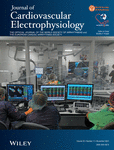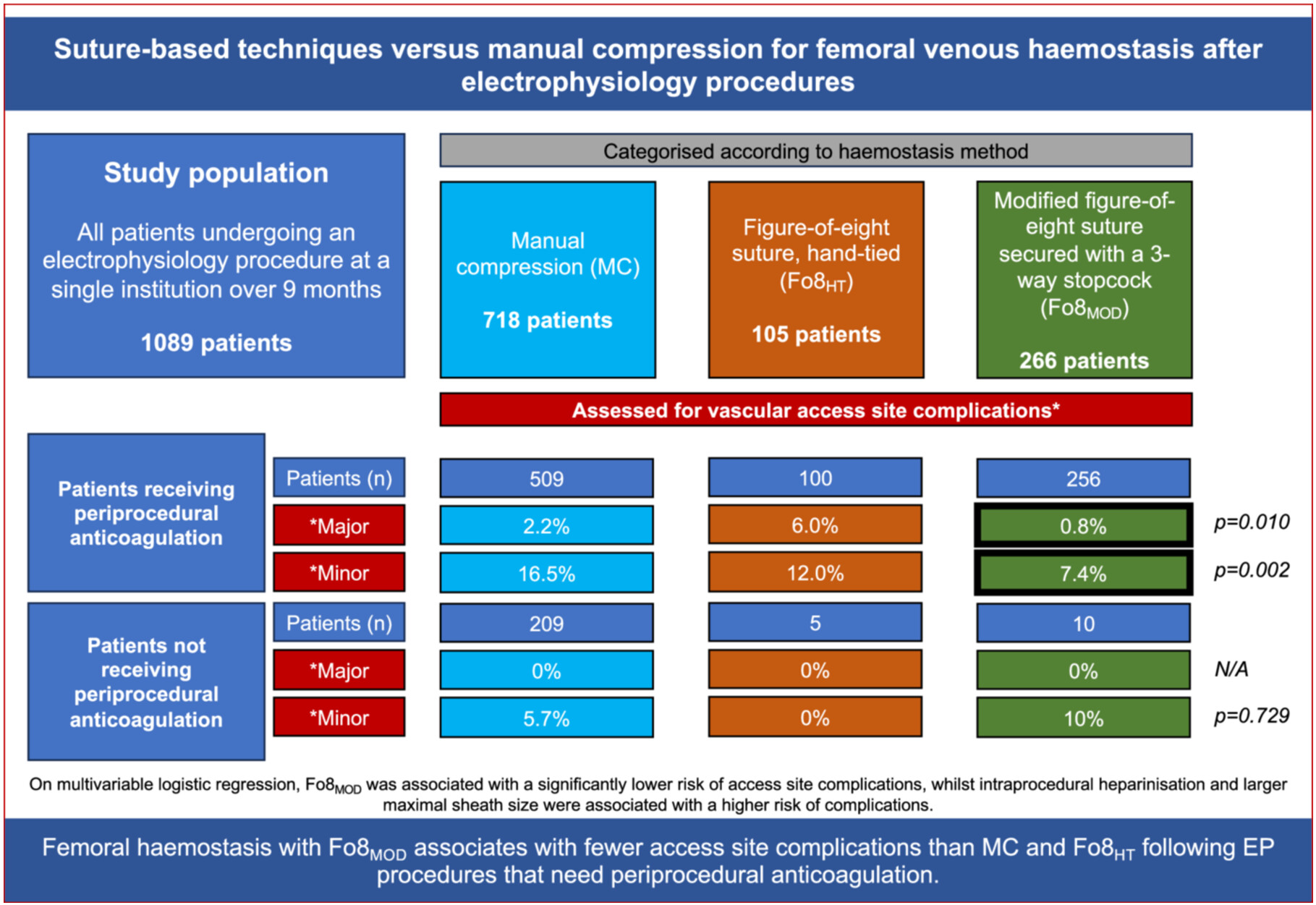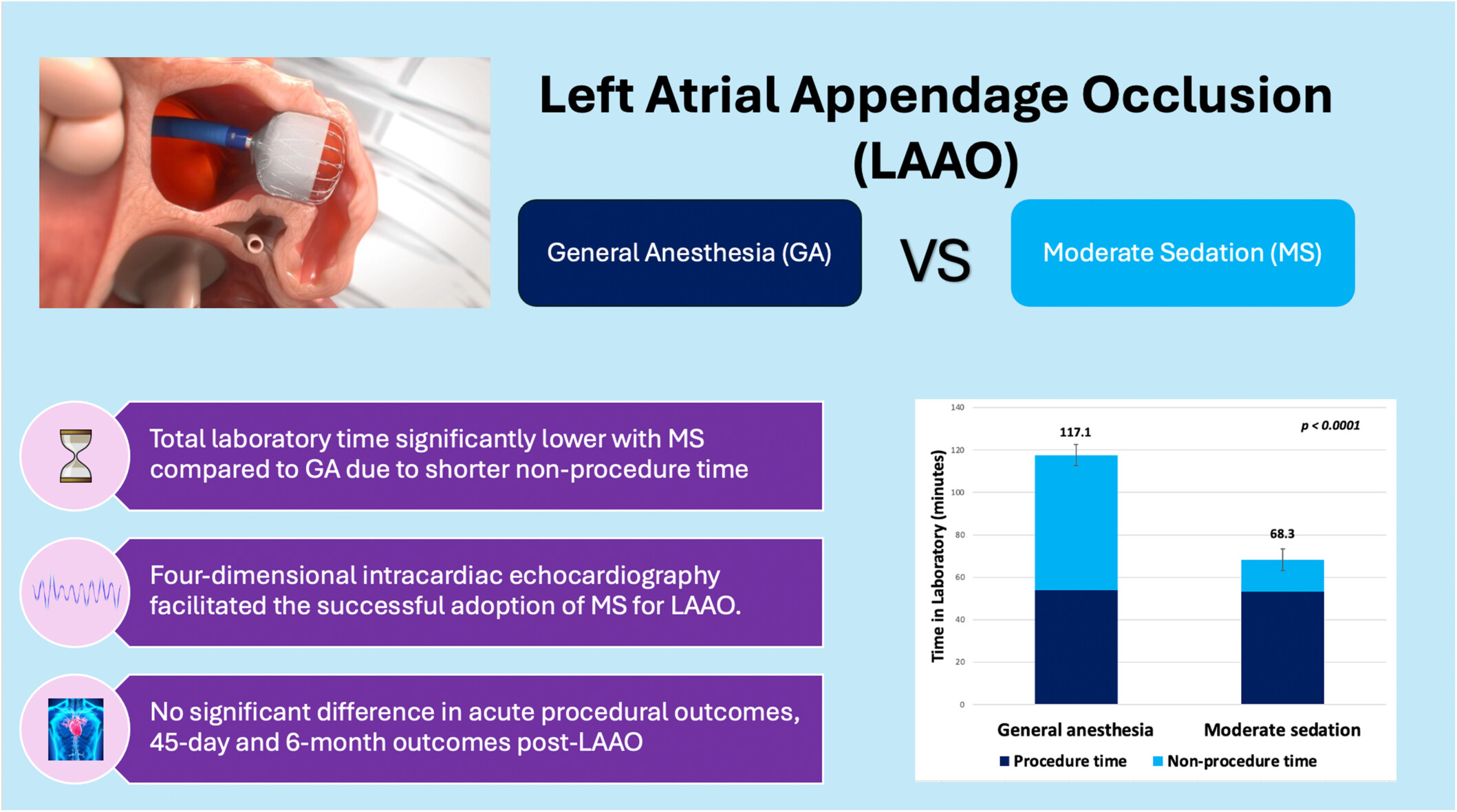Journal list menu
Export Citations
Download PDFs
ISSUE INFORMATION
ORIGINAL ARTICLE
Distribution of antral lesions with the novel size-adjustable cryoballoon for pulmonary vein isolation and the differences based on left atrial remodeling
- Pages: 2099-2108
- First Published: 21 August 2024
Acute procedural safety of the latest radiofrequency ablation catheters in atrial fibrillation ablation: Data from a large prospective ablation registry
- Pages: 2109-2118
- First Published: 26 August 2024
Suture-based techniques versus manual compression for femoral venous haemostasis after electrophysiology procedures
- Pages: 2119-2127
- First Published: 04 September 2024
Indications and outcomes of elective open chest lead extractions
- Pages: 2128-2133
- First Published: 05 September 2024
Real-world battery longevity of implantable loop recorders implanted for unexplained syncope: Results from a large single-center registry
- Pages: 2134-2143
- First Published: 09 September 2024
Combined approach of high-power and very high-power, short-duration ablation in superior vena cava isolation
- Pages: 2144-2152
- First Published: 09 September 2024
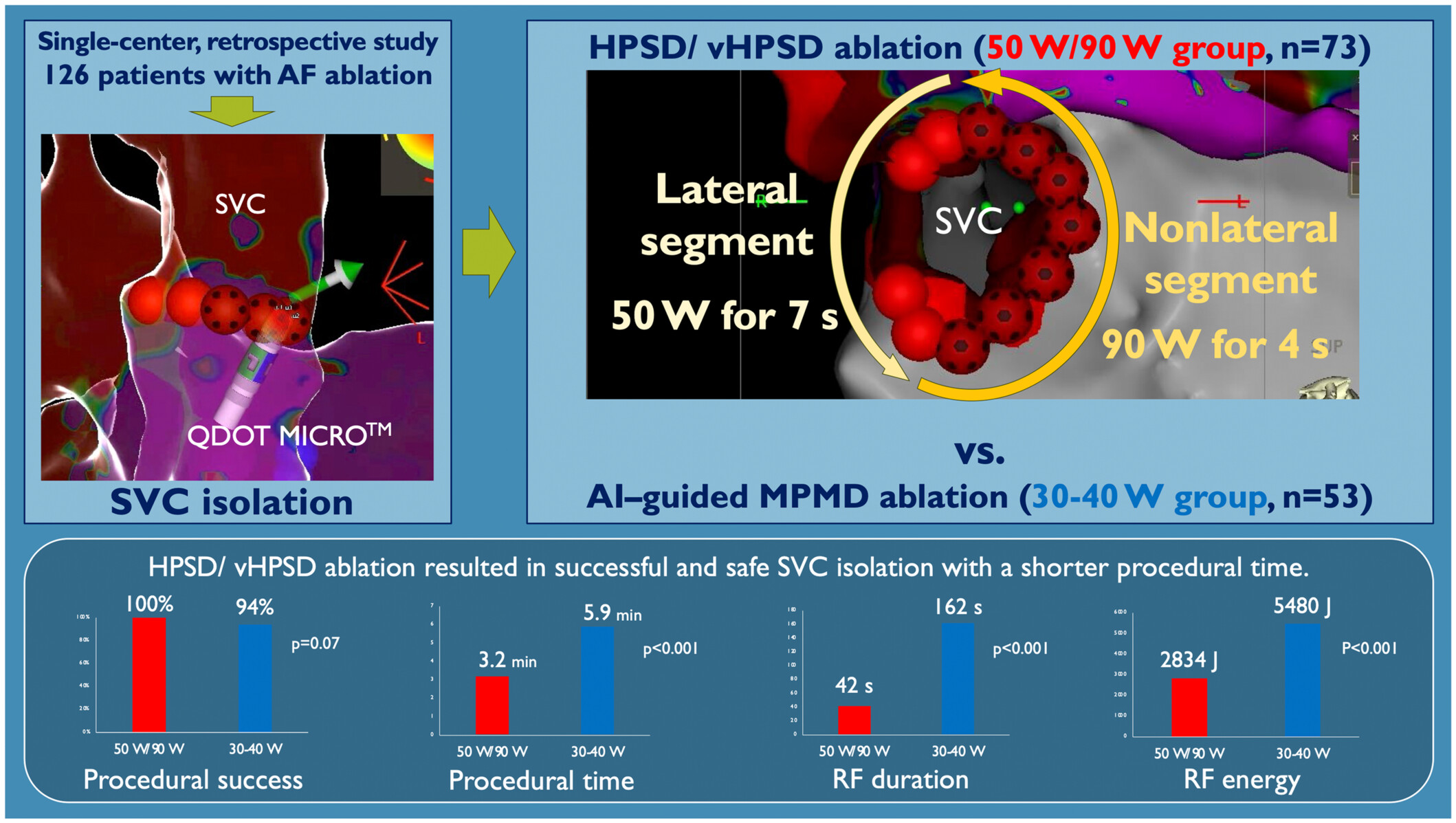
This novel approach that combines high-power, short-duration (HPSD) and very high-power, short-duration (vHPSD) ablation successfully achieved superior vena cava (SVC) isolation with a shorter procedural time, shorter radiofrequency (RF) duration, and lower RF energy than those with ablation index (AI)-guided middle-power, middle-duration (MPMD) ablation for patients with atrial fibrillation (AF).
Left ventricular volumes and function in successful and failed His-BundLe Pacing. A comparative prospective study
- Pages: 2153-2160
- First Published: 09 September 2024
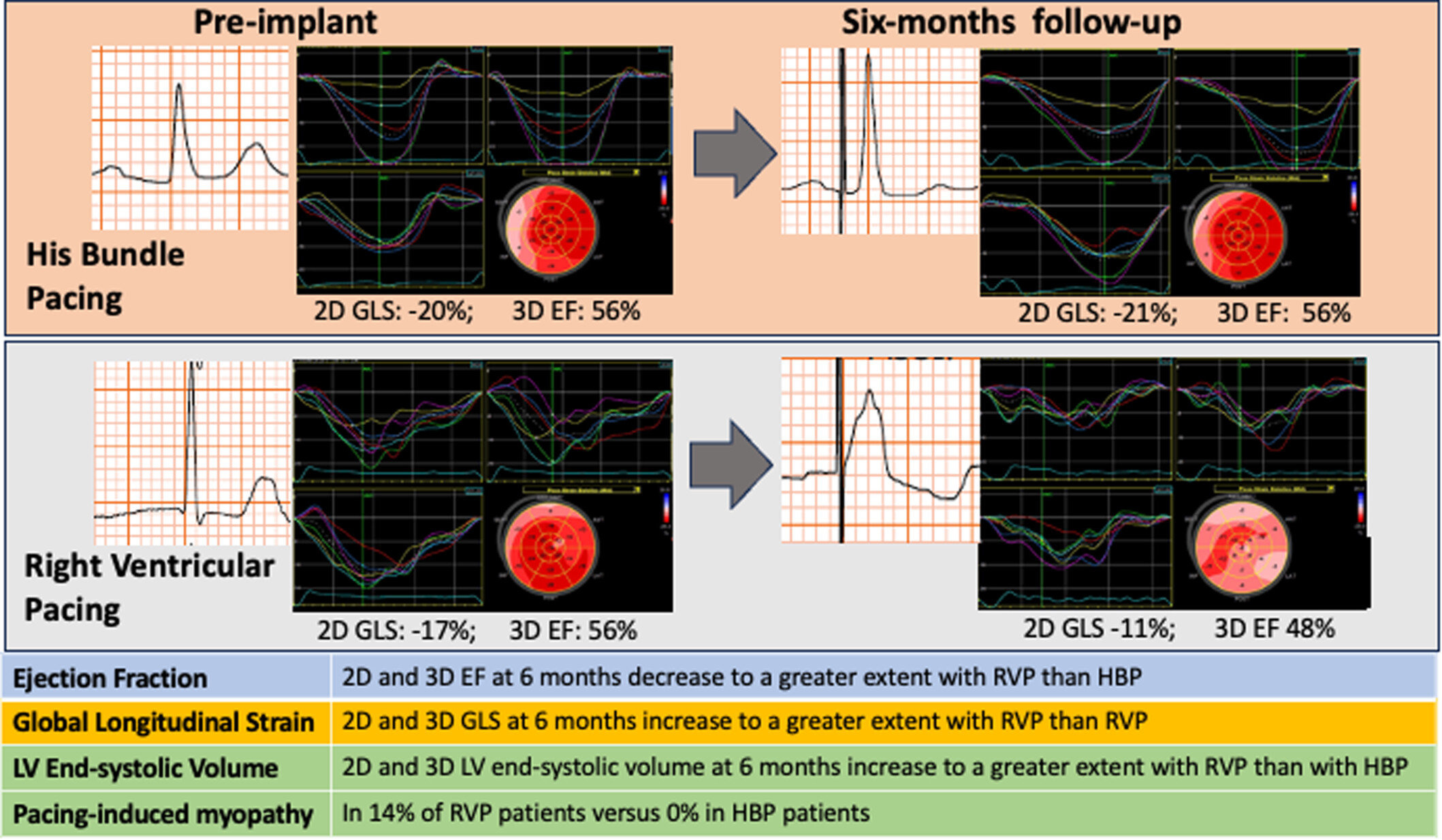
Patients with successful His-Bundle Pacing (HBP) had a narrower paced. QRS compared to patients who had Right Ventricular Pacing (RVP) because of failed HBP. After 6-months of high pacing burden, HBP was superior to RVP in preserving left ventricular systolic function and shape in patients with normal ejection fraction at baseline. Pacing induced cardiomyopathy developed more often in patients with RVP than in those with HBP.
Spontaneous termination of ventricular tachycardia in the human heart
- Pages: 2161-2172
- First Published: 16 September 2024
EDITORIAL
ORIGINAL ARTICLE
Thirty-day mortality risk in patients following radiofrequency and cryoballoon ablation for atrial fibrillation across the entire nation of Poland: An 8-year analysis from the National Health Fund of Poland
- Pages: 2176-2181
- First Published: 18 September 2024
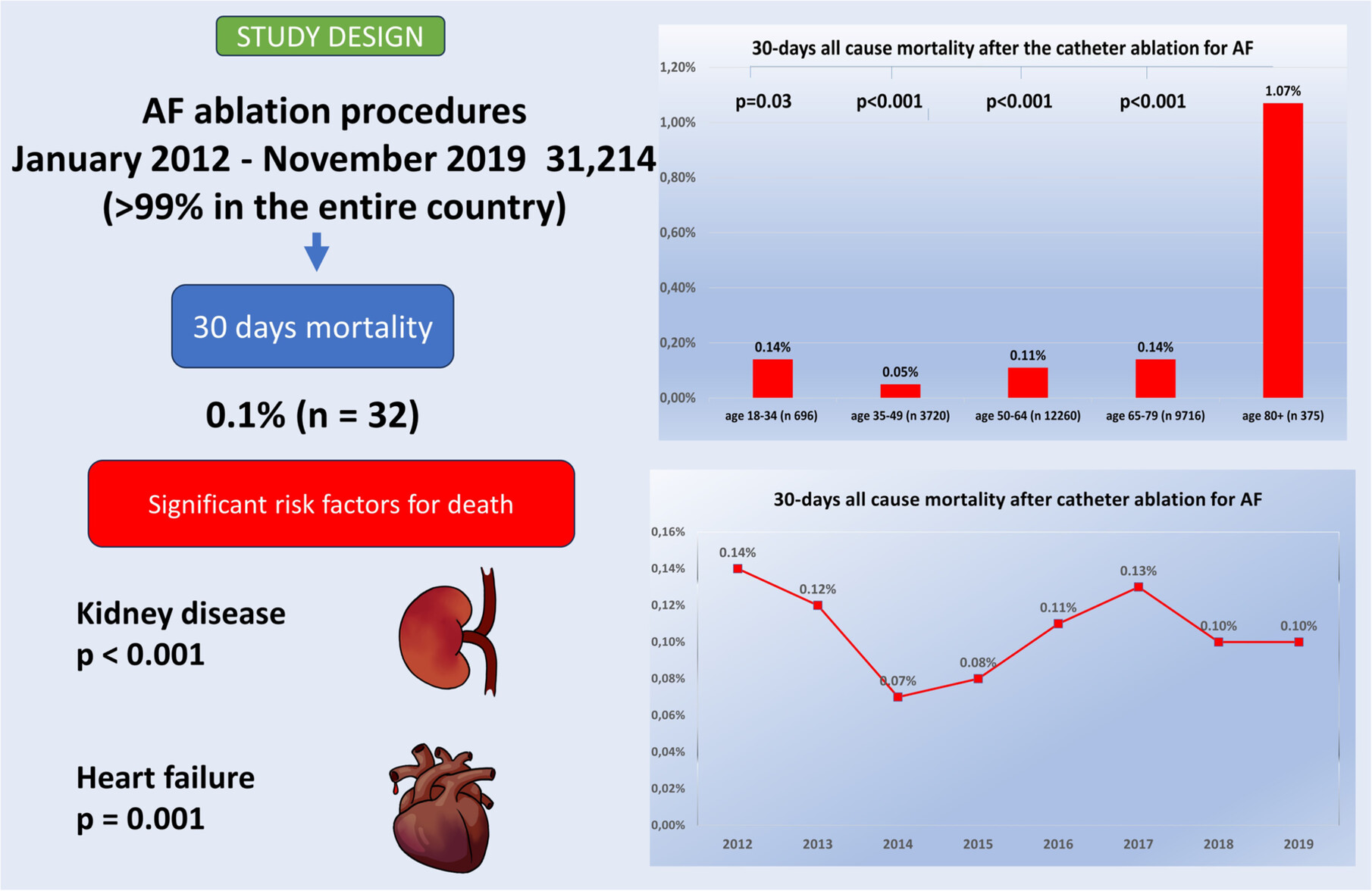
This graphical abstract shows a study of 31 214 AF ablation procedures (2012–2019, >99% in the entire country) with a 30-day mortality rate of 0.1% (n = 32). Significant risk factors for death included kidney disease (p < 0.001) and heart failure (p = 0.001). Mortality was highest in patients aged 80+(1.07%, p < .001), with yearly rates peaking at 0.14% in 2012.
Expert opinion on design and endpoints for studies on catheter ablation of atrial fibrillation
- Pages: 2182-2201
- First Published: 25 September 2024
Impact of moderate sedation on electrophysiology lab time for left atrial appendage occlusion using 4D-intracardiac echocardiography
- Pages: 2202-2210
- First Published: 25 September 2024
The positive F wave in lead V1 of typical atrial flutter is caused by activation of the right atrial appendage: Insight from mapping during entrainment from the right atrial appendage
- Pages: 2211-2219
- First Published: 26 September 2024
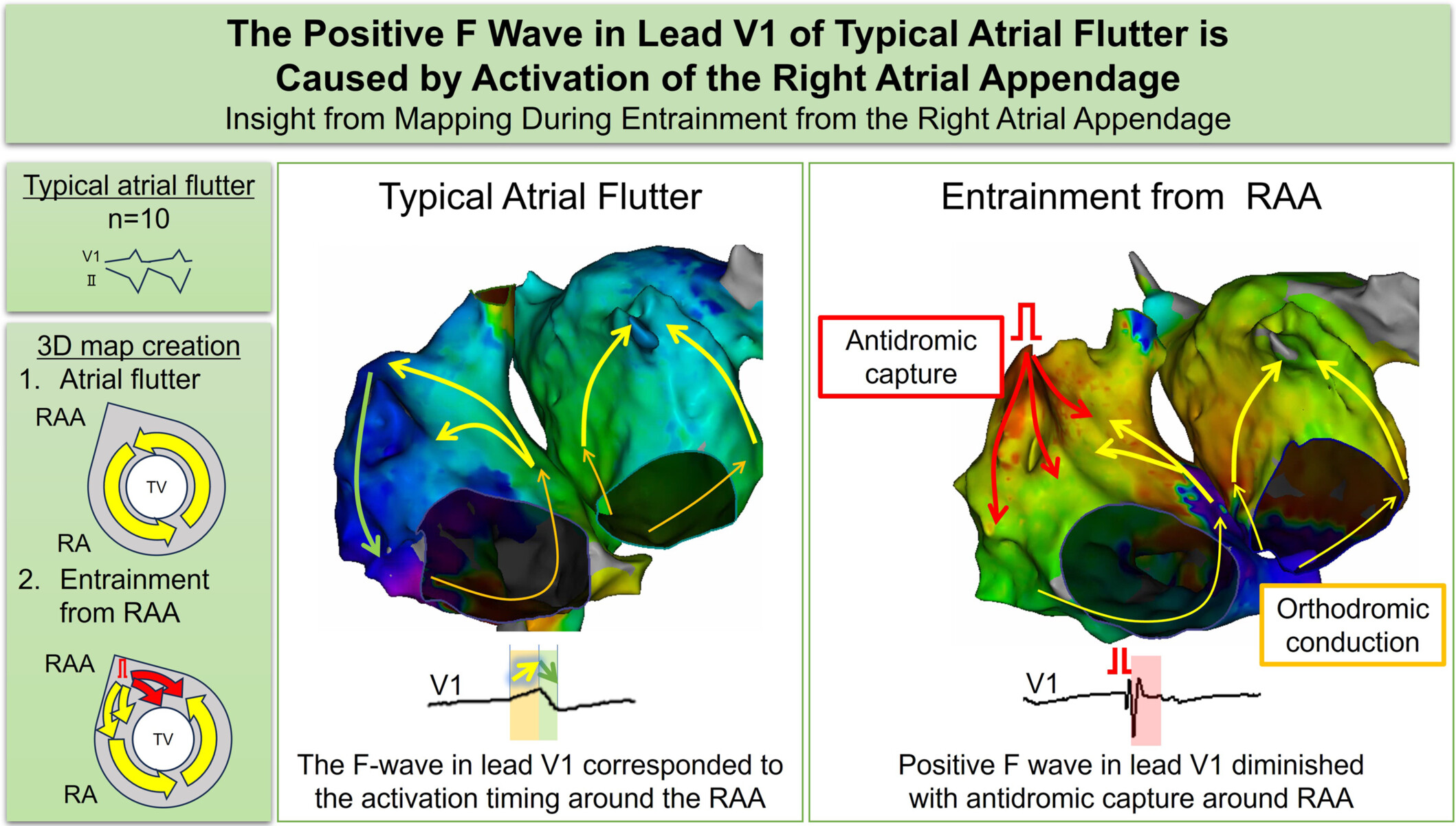
The positive F wave in lead V1 changed during entrainment from the right atrial appendage (RAA) during typical atrial flutter (AFL). The 3-dimensional (3D) electroanatomical map during entrainment from the RAA revealed an area of antidromic capture around the RAA, which was the only difference from the 3D electroanatomical map of typical AFL, proving that the activation around the RAA is responsible for the generation of the positive F wave in lead V1 of typical AFL.
REVIEW
A meta-analysis of the distance between lead-implanted site and tricuspid valve annulus with postoperative tricuspid regurgitation deterioration in patients with left bundle branch area pacing
- Pages: 2220-2229
- First Published: 27 September 2024
BRIEF COMMUNICATION
Ventricular tachycardia ablation with pentaspline pulsed field technology in two patients with ischemic cardiomyopathy
- Pages: 2230-2236
- First Published: 26 August 2024
Calcium channel blockers and beta blockers in pediatric supraventricular tachycardia
- Pages: 2237-2241
- First Published: 23 September 2024
EP ROUNDS
Differential ventricular overdrive pacing during long-RP supraventricular tachycardia: How can we interpret?
- Pages: 2242-2245
- First Published: 08 July 2024
EDITORIAL
Understanding differential pacing: Unraveling the pitfalls of base versus apex pacing in distinguishing AVNRT from AVRT over a septal AP
- Pages: 2246-2247
- First Published: 03 October 2024
EP ROUNDS
What is the mechanism of this narrow QRS tachycardia in a patient with type-A Wolff-Parkinson-White (WPW) syndrome?
- Pages: 2248-2250
- First Published: 02 September 2024
CASE REPORT
Normalization of increasing shocking coil impedance with full output synchronized shock
- Pages: 2251-2253
- First Published: 21 August 2024
Decremental properties of a concealed nodoventricular pathway
- Pages: 2254-2257
- First Published: 10 September 2024
His-bundle pacing from the right atrium: Solving pacemaker implantation challenges post-TriClip
- Pages: 2258-2261
- First Published: 10 September 2024
LETTER TO THE EDITOR
Methodological issues on AV-optimized conduction system pacing for treatment of AV dromotropathy: A randomized, cross-over study
- Page: 2262
- First Published: 09 September 2024
REPLY
Reply: Methodological issues on atrioventricular (AV)-optimized conduction system pacing for treatment of AV dromotropathy: A randomized, cross-over study
- Pages: 2263-2264
- First Published: 23 September 2024
LETTER TO THE EDITOR
Outflow tract ventricular arrhythmias following catheter ablation of atrial fibrillation: What is the true effect?
- Page: 2265
- First Published: 25 September 2024
REPLY
Response to letter re: ‘Premature ventricular complexes after catheter ablation for atrial fibrillation: Accounting for regression to the mean’
- Page: 2266
- First Published: 14 October 2024




